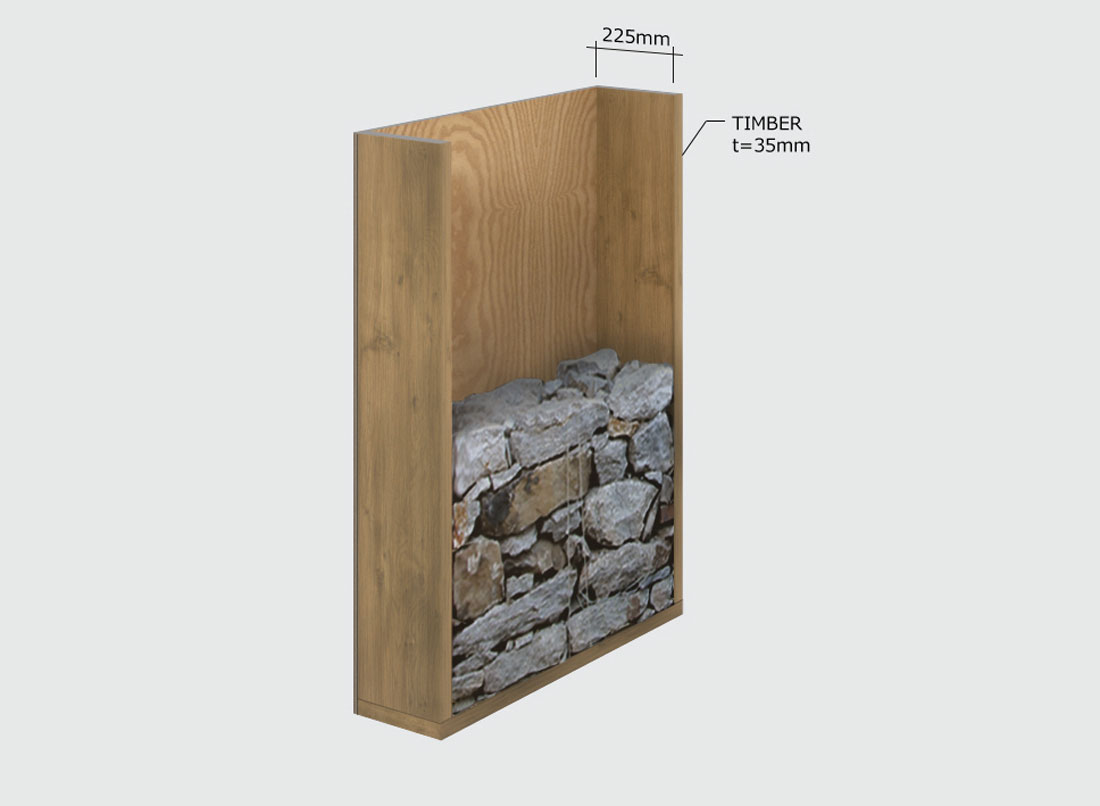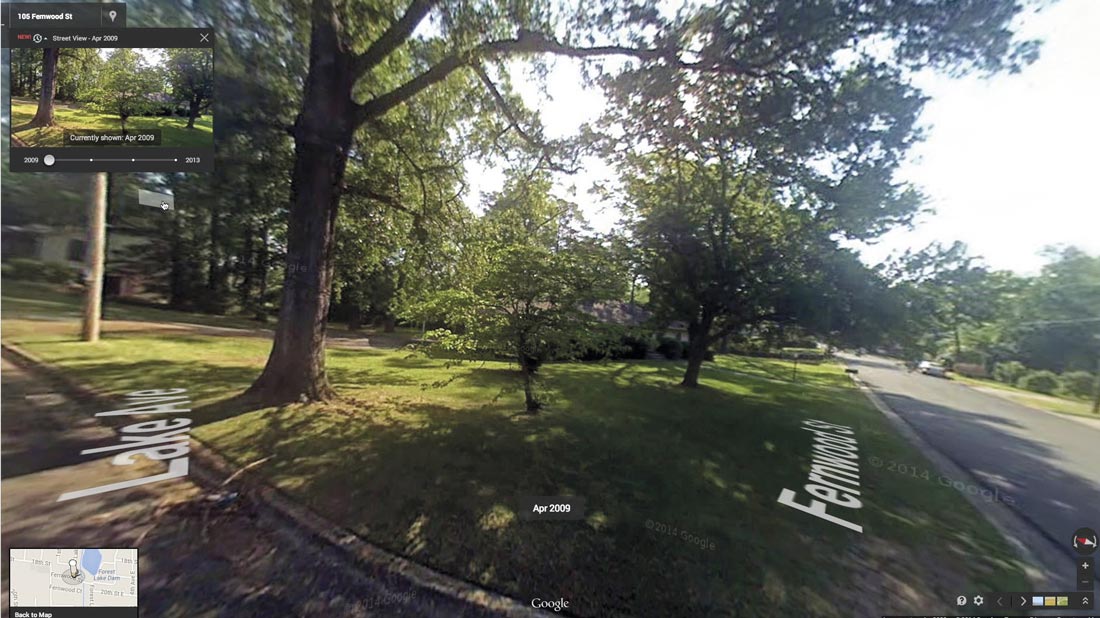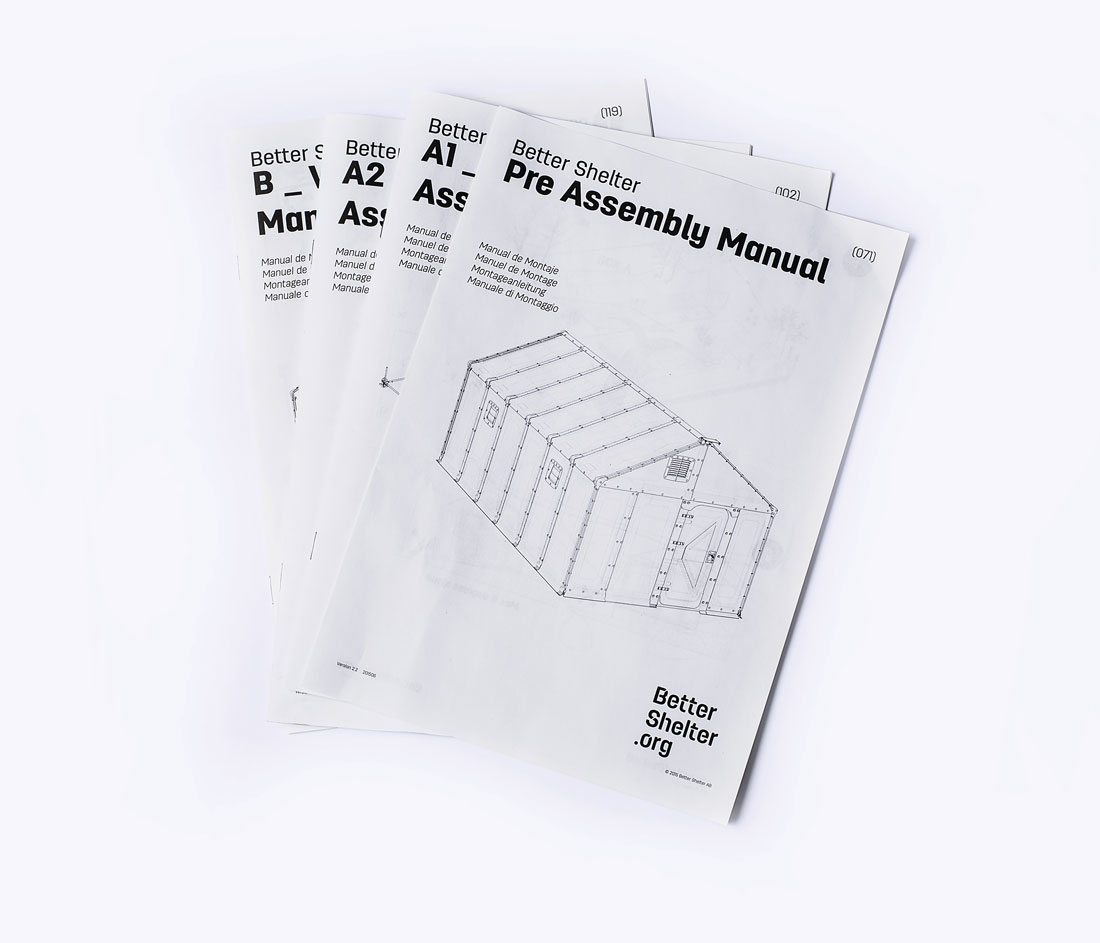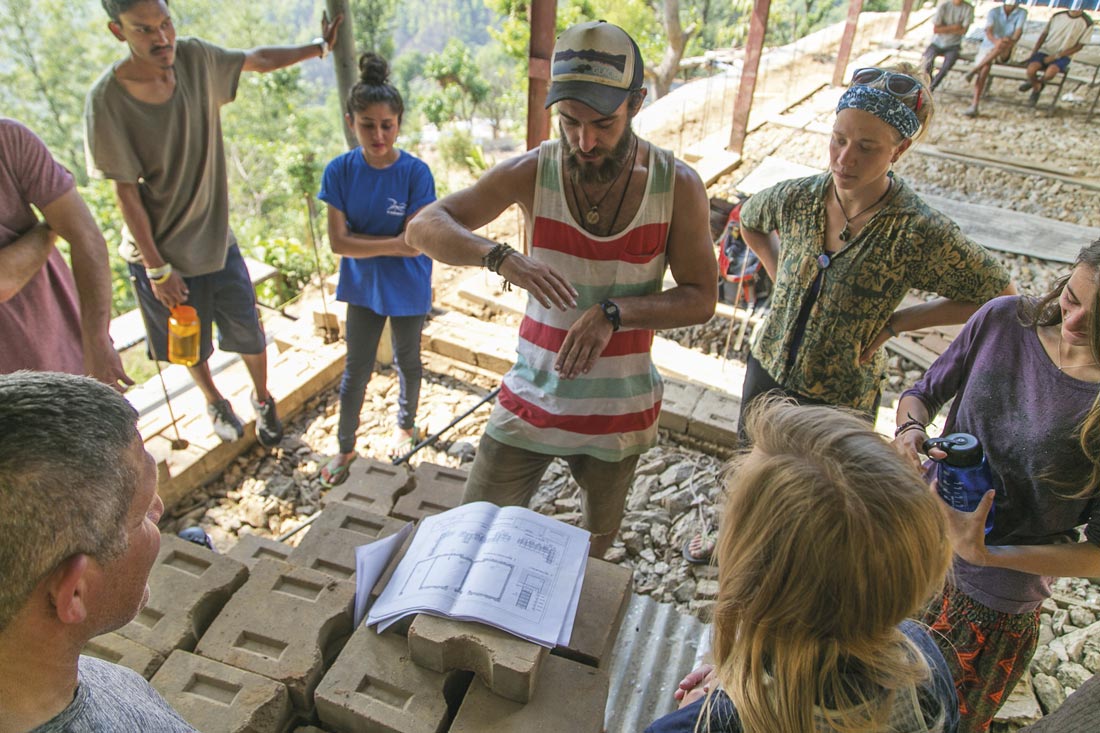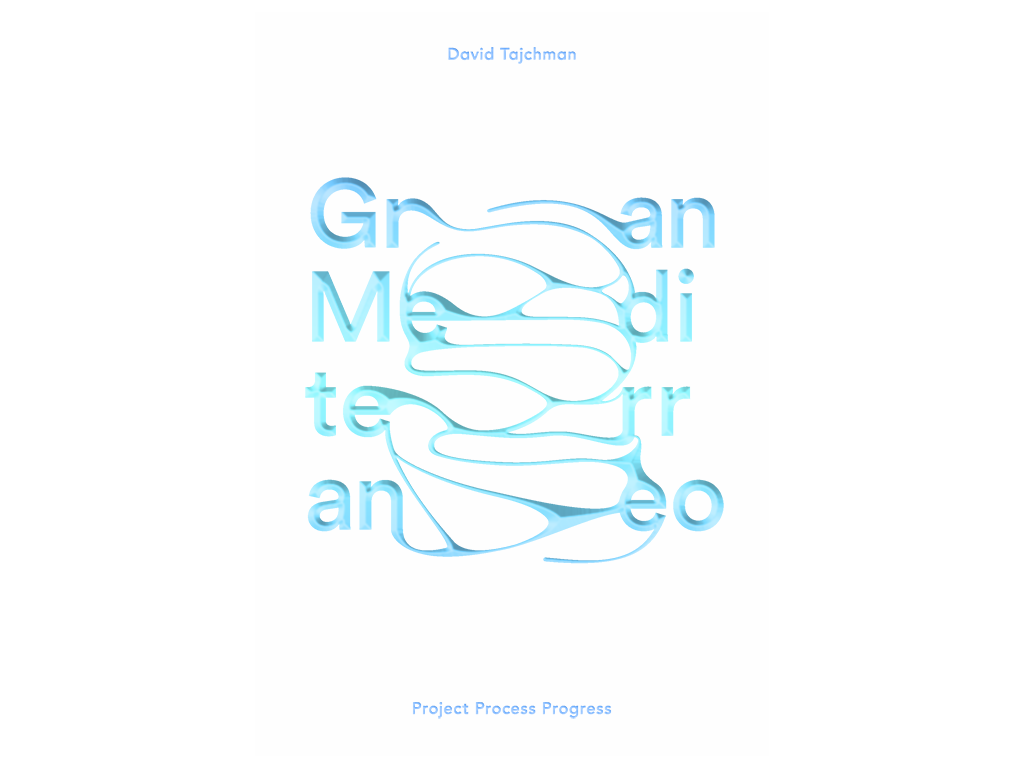Would 3.5 Square Meters Be Enough?
1953 – The flood that hit the shores of the North Sea in February of 1953 was one of the most devastating natural disasters ever experienced in Holland, Belgium, England, and Scotland. Referred to as the “Water Disaster” or the “Great Flood,” this catastrophic event was the result of a unique combination of factors including a high tide, heavy rain, and storm winds blowing over the North Sea. The winds and high water level, which rose by approximately six meters, resulted in widespread flooding (which appeared as a sea of blue on the flood maps). Nearly 2,000 people (and many livestock) died that night while struggling to overcome the rising tide, and numerous properties were severely damaged.
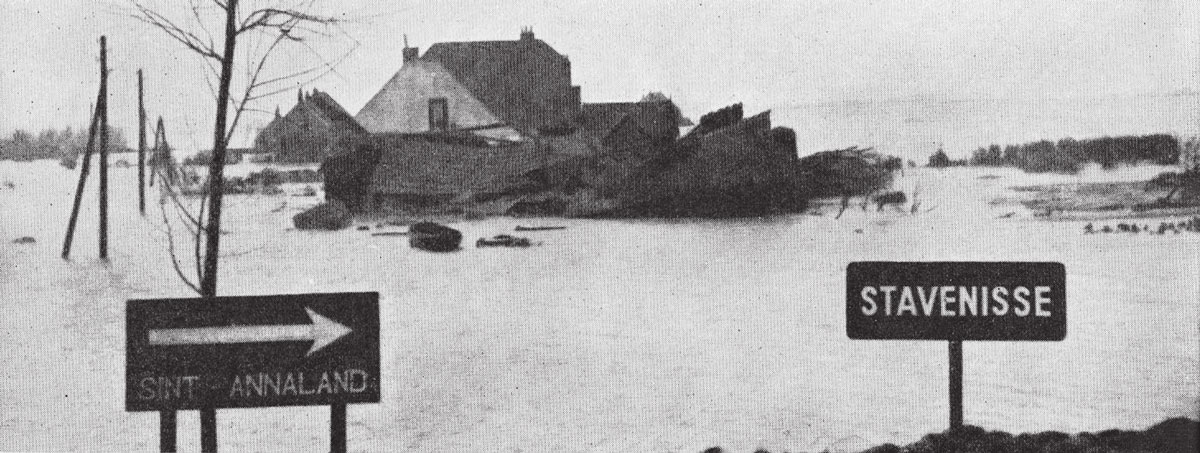
Were it not for a single black-and-white photographic album about the flood, which was published several months later, [1] it is likely that dry descriptions of the extreme weather conditions, accompanied by meteorological explanations and inventories of victims and material losses, would remain as the only testimony to this dramatic event. Yet the disaster’s representation in this book, which was published in order to raise donations for the restoration of the devastated area, offered an entirely different perspective. While referring to the climate conditions and damage, the narrative focused on the behavior of the local population, which was described in great detail: neighboring farmers joined forces to safely evacuate residents, rescue what little equipment could be saved, and fill piles of sandbags to protect the houses against flooding; volunteers from nearby areas assisted army and police forces in evacuating local residents; and once the telephone and telegraph lines went down, amateur radio operators quickly renewed radio communications and reestablished a connection with the world.
2017 – Over the past decade, millions of people have been uprooted from their homes due to extensive natural disasters. At present, additional millions around the world are struggling to remain alive as they battle intense heat and cold, thirst and hunger, and anxiety about the future and the fate of their relatives. Extreme natural phenomena occurred over the last decade in the United States, Brazil, Japan, Turkey, the Philippines, Nepal, the Middle East, and Italy, [2] appearing in satellite or drone photographs as highly powerful images of entirely reconfigured areas. Such phenomena are defined as “natural disasters” when they adversely affect both local residents and visitors to the region, requiring immediate care for the affected population as well as a future process of rehabilitation.
Local and international relief agencies prepare for future natural disasters on an ongoing basis, and arrive in the field in their immediate aftermath. Media reports often make reference to rescue teams from one country or another making their way to a disaster area, to the successful delivery of airborne supplies, or to rescue and medical teams dispatched with special equipment. Yet alongside praise for the support and immediate assistance they provide, critiques of such humanitarian operations note the problematic aspects of responses that are not always compatible with the needs of a specific population. More than once, heavy blankets were sent to especially hot regions; large quantities of children’s toys were dispatched to areas with no distribution centers or means of transportation; and medical supplies were found abandoned at the side of a road or in a field (where, at best, the equipment chests were transformed into seats). [3]
Top-Down Versus Bottom-Up Approaches
Models of action and rehabilitation for affected populations reveal a significant difference between the traditional “top-down” [4] approach and its opposite, the “bottom-up” approach. [5] In the top-down approach, governments and organizations (whose operations are not always transparent) decide how and when to act, both before and after the occurrence of a natural disaster. Decisions on a regional, national, or international level trickle down to the population in the form of information controlled by these authorities, as well as by means of their actions in the field. Yet this comprehensive wealth of information often remains an inaccessible mass of abstract principles that are extremely difficult to implement. Only a fraction of these procedures enter into the awareness of the community or impact its well-being in the form of actions such as food and equipment deliveries, the rapid organization of tent cities for evacuated residents, the transformation of a sports stadium into a temporary living zone, or the sounding of sirens to warn about an imminent evacuation.
By contrast, the bottom-up approach views individuals and communities as uniquely equipped to evaluate their own needs, and relies on them for immediate responses and for the subsequent redesigning and rehabilitation of their environment. Newly developed and increasingly variegated initiatives by individuals and communities worldwide rely on accelerated technological changes and their social and cultural impact. Communal strategies for disaster preparedness, response, and eventual recovery and adaptation to new circumstances are different and more diverse than they once were. The understanding that communities are capable of taking matters into their own hands even in extreme situations, and that people with no professional skills can nevertheless take responsibility and lead operations on the ground, impacts the rehabilitation process and influences both its character and its degree of success.
At present, it is still impossible to characterize such changes in community responses in conclusive terms. Geographical regions differ from one another, each community is unique, and responses to similar disasters are revealed as entirely different in different areas. Nevertheless, it is possible to identify several central themes that define modes of community organization and the preventative measures taken by the population, as well as immediate and long-term communal strategies of coping with the challenges of rehabilitation. These trends include: sharing knowledge, social technology, an expanded range of DIY operations, and a renewal of the archaic community practice of storytelling.
Sharing Knowledge
Shigeru Ban + Voluntary Architects’ Network (VAN): Khumjung Secondary School, Nepal, 2017
Nosigner Design: OLIVE, Since 2011. Art direction and graphic design: Eisuke Tachikawa
In the past, zones in the aftermath of disasters such as an earthquake, for instance, would draw architecture, engineering, or construction firms that planned and built temporary housing. This process is currently changing thanks to the rapidly growing phenomenon of “sharing knowledge” – the transmission of professional and technical knowledge to the population at large. Some examples include technical instructions for transforming an empty Coca-Cola can into a water-warming device; an explanation about how a simple wooden joint can facilitate the construction of shelter walls; an introductory online course providing extensive information about subjects such as building a fire or constructing a shelter; and a mobile workshop carrying heavy equipment and accompanied by a team to assist those interested in repairing damage on their own. These examples reveal how individuals and communities are turning to professionals and to additional sources such as the Internet to acquire the knowledge or basic training necessary for taking independent action.
Social Technology
Urban Risk Lab + HADR Lincoln Laboratory at the MIT School of Architecture and Planning: PREPHub . Neighborhood Infrastructure for Disaster Preparedness, 2016
New technological developments surround and overwhelm us with an endless stream of information, including news updates on mobile phones, television reports, and online sources. When it comes to coping with natural disasters, the technology of social networks has resulted in a veritable revolution. Events once perceived as unfolding in distant and godforsaken places have drawn immeasurably closer to us due to mobile phone cameras and file sharing, which take us into the homes of survivors, transport us to isolated areas, and allow for new forms of interpersonal communication.
We currently have access to various types of applications and websites that enable people to report, film, photograph, and disseminate information on widely used social networks. These activities, which almost all of us engage in a daily basis, continue to be implemented in the course of natural disasters. Indeed, numerous reports describe local residents who, instead of evacuating a flooded area, for instance, climbed to the best vantage point in order to document the rising water level with their cameras. Social networks are now the first to report disasters and transmit emergency announcements, with various online sources spontaneously creating real-time connections and serving as an excellent means of transmitting information to the local population [6] and for rehabilitating it later on. [7]
Social networks are also used by people located at a removal from the disaster site, enabling them to participate in relief efforts while facilitating communication with families, rescue teams, and humanitarian relief groups. [8] Social networks are used in an almost endless array of ways: new applications can identify extreme earth tremors and warn about the occurrence of an earthquake; smartphone owners can communicate to friends about an earthquake; a “smart bench” located in a public area enables local residents to practice off-grid communications, charge electronic devices, and stock up on vital supplies; and Internet sites allow volunteers to post offers for hosting evacuated disaster victims. In these and many other cases, people interact online during emergencies as they do in everyday life – a routine that contributes to their successful management of uncontrollable events.
Storytelling
Neta Kind-Lerer, William Briand, Anica James, Mitch Ward, and Jonathan H. Lee: Stories of the Unheard, 2016
Andrew Beck Grace: After the Storm, 2015. Interactive documentary, 15 minutes
Smartphones have come to function as a relay station to which one connects to learn about worldwide developments and current events, and to distribute information by means of personal photographs, texts, emotional statements, and virtual friendships. Their built-in cameras and microphones have transformed them into omnipresent eyes – a means of personal and environmental documentation through photographs, videos, and sound files. This readily accessible tool has transformed many of us into experimental documentarians who capture (among other things) the process of coping with natural disasters. [9] Examples include independent films taken as souvenirs of a destroyed village or region; recorded conversations with residents speaking of their experiences during an earthquake; documentation of flight, destruction, recovery, rehabilitation and reconstruction, and sometimes also of the careful optimism felt in the aftermath of a disaster; or the personal conclusions drawn from these experiences, presented in some cases as a letter to a future survivor. These and other practices revive the oral tradition of communal storytelling, which has the power to raise awareness and assist (if only a little) in the process of coping with disaster.
DIY (Do It Yourself)
Better Shelter (IKEA Foundation, UN Refugee Agency (UNHCR): A Home Away from Home, Since 2010
Conscious Impact Nepal, 2015
In recent decades, “do it yourself” practices have been widely assimilated into the domestic sphere, with companies such as IKEA offering products (beds, chests, closets) for home assembly with the help of step-by-step diagrams. By charging the consumer with the product’s construction, manufacturers cut down on their expenses, while offering buyers an enjoyable sense of satisfaction and participation and encouraging them to develop technical skills and sometimes also design capabilities.
Countless projects of this kind have recently entered the arena of humanitarian aid: lightweight, flexible structures dispatched to disaster zones are independently assembled by local residents who can alter their size, coat their walls with various materials, and experiment with different types of insulation; manually pressed mud bricks are made of local earth in the absence of other construction materials; and lightweight foam plastic panels allow for the simple construction of emergency shelters. These examples, like many others, rely on the end-users’ existing technical knowledge and manual skills, while reinforcing their sense of independence and connection to the product.
The tension between conditions in the field and the minimum standard of 3.5 square meters per each person in the shelter (as determined by the Red Cross) is the main issue at stake. [10] The shift from centralized decision-making (which assumes that decision makers “from above” know best how to attend to a community’s emergency needs) to a more open, improvisational, adaptive approach, which empowers communities to define and care for their unique needs, makes use of a range of community skills. The flexibility, independence, and sometimes also sense of safety afforded by efficient functioning in extreme situations contributes to the development of new practices and tools, to “bottom-up” coping with extreme situations, and to successful long-term rehabilitation.
